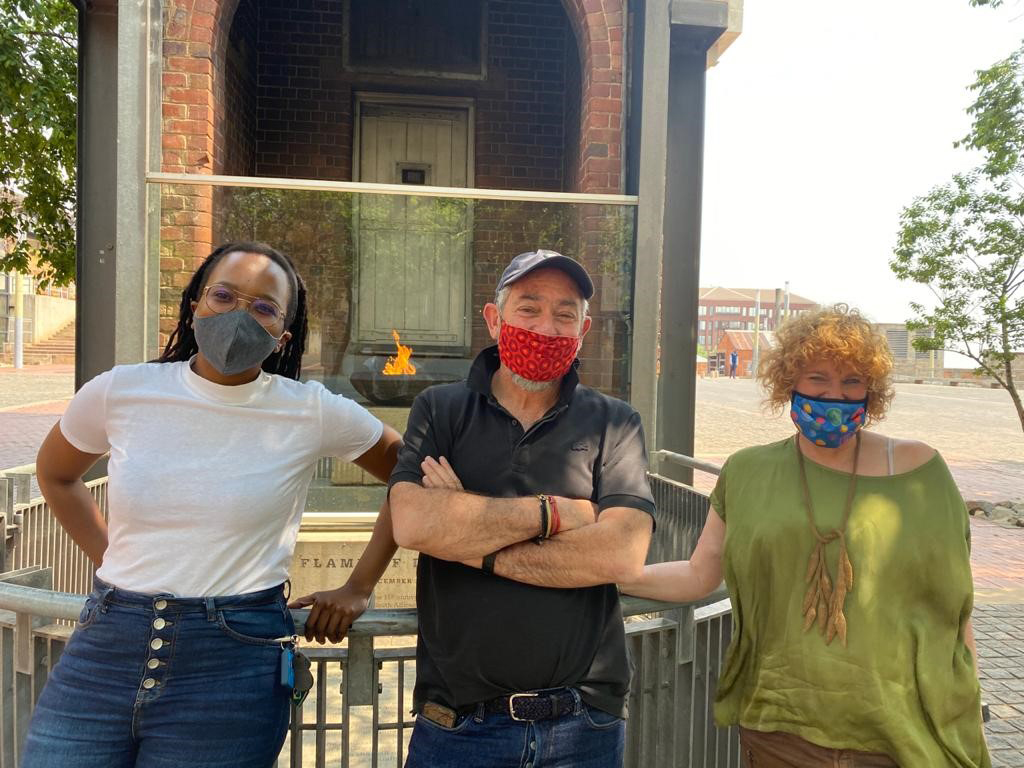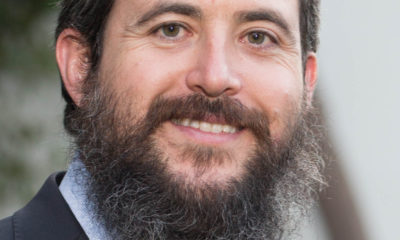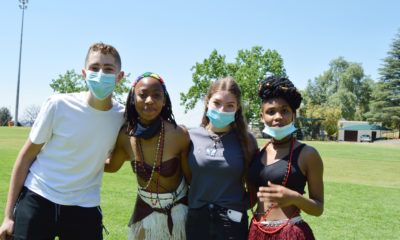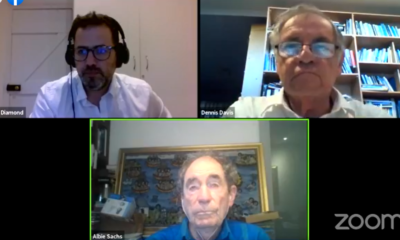
Featured Item

Preamble to the Constitution “the mezuzah of the country”
Successful businessman and philanthropist Robbie Brozin had never read the awe-inspiring preamble to the Constitution when he was invited to become a trustee of Constitution Hill five years ago.
When he took the time to read it properly, it changed his life. “It blew me away, I got goosebumps,” he said this week.
“I knew it was a world class Constitution, but I’m embarrassed to admit I didn’t know too much about it or about Constitution Hill,” said Brozin. He has since dedicated his time to making sure the preamble, the Constitution and what Constitution Hill stands for strike the same patriotic chords in the lives of ordinary South Africans.
“I see the preamble as the mezuzah of the country. It provides so much hope and comfort, and I’m prepared to fight for it,” said Brozin. He refers to the Lubavitcher Rebbe, Rabbi Menachem Mendel Schneerson’s unequivocal assurances many years ago that South African Jewry had nothing to fear, and that the country would be good for Jews until Moshiach came – and even better afterwards.
“The rebbe’s blessing and the preamble to the Constitution give me hope at a time when our community needs a positive comforting message. We really are a miracle country,” he said.
This week, coinciding with Heritage Day, an online exhibition and archive is being launched that tells the story of the making of the Constitution and Constitutional Court.
It falls under the umbrella of “We, the People”, a movement launched last week by the Constitution Hill Trust that is aimed at inspiring a global movement of active citizens working for change, united in diversity, according to Brozin. “The Constitution, as our founding document, embodies the movement’s values and principles,” he said.
The online exhibition has been spearheaded by curator and historian Lauren Segal and legal mind Lwando Xaso, former clerk of the court under retired Constitutional Court Judge Edwin Cameron.
The ambitious project has been three years in the making, and involves a collaboration of more than 60 people. Segal and Xaso have worked tirelessly to create the interactive exhibition, which animates the Constitution to bridge the gap between its values and ideals and people’s lived reality.
The project is very close to Segal’s heart. Her time at Constitution Hill dates back 17 years, when she headed up the team that set up the heritage precinct around the new Constitutional Court and developed the prison museums. She worked closely with late Chief Justice Arthur Chaskalson, who was appointed by Nelson Mandela to be the first president of South Africa’s new Constitutional Court.
“There are many ways to look at Heritage Day. It can be about braaivleis, it can be about people wearing traditional costumes. At this site, our heritage is the spirit that was created through the Constitution,” she said.
“Our broad vision is to ensure that the Constitution is brought alive in the minds of young and old South Africans. We do this by telling the story in a multi-format way through the voices of the story tellers involved, through young people, and through techniques like animation,” said Segal, who has co-authored several books and curated and designed the Johannesburg Holocaust & Genocide Centre museum.
“We want every single school pupil in the country to come to Constitution Hill, if not physically, then virtually through our site. We want them to understand how this country was born so they can recognise that it happened through the blood, sweat, and tears of enemies who sat across from each other at the negotiating table. This is Heritage Day for us.”
Echoing her sentiments, Xaso said, “The idea is for everyone to own this story, whether you are Jewish or Xhosa, this is your history too,” she said.
History, Xaso said, can be represented in many ways from very diverse points of view. “We have chosen to tell the story of the making and the meaning of our Constitution from the perspective of those who struggled to free South Africa and who set out to build a united country based on human dignity, equality, and freedom,” she said.
The virtual exhibition was guided by the preamble of the Constitution, calling on South Africans to “Recognise the injustices of our past; honour those who suffered for justice and freedom in our land; respect those who have worked to build and develop our country; and believe that South Africa belongs to all who live in it, united in our diversity.”
“I’m a preamble nut,” said Brozin, “The first three words, ‘We, the People’, emphasises the country’s struggle for human rights, and calls on us to be involved in transforming our country.
“I believe the preamble is the vision for South Africa. It’s our North Star. If we follow it, we can never stay lost. Reading it inspires confidence, pride, comfort, and security. Most importantly, it should inspire action. It demands of us to roll up our sleeves and do the work to make the vision real. I see it as the blueprint of our collective responsibility to our country, which has been born by the sacrifice of so many. We honour them by playing our part.”
The “We, the People” campaign includes a number of forthcoming creative initiatives. Last week, the remaking of musical legend Hugh Masekela’s hit piece Thuma Mina(Send Me) was released. It’s a musical collaboration between the Hugh Masekela Foundation and Constitution Hill involving many of South Africa’s greatest artists performing together as The Masekela All-Stars, produced at Constitution Hill.
The online exhibition, launched on Thursday, 24 September, will be a go-to site for pupils and teachers, and a portal for researchers and scholars to reach archival collections related to the Constitution.
- For more information, go to www.ourconstitution.co.za










